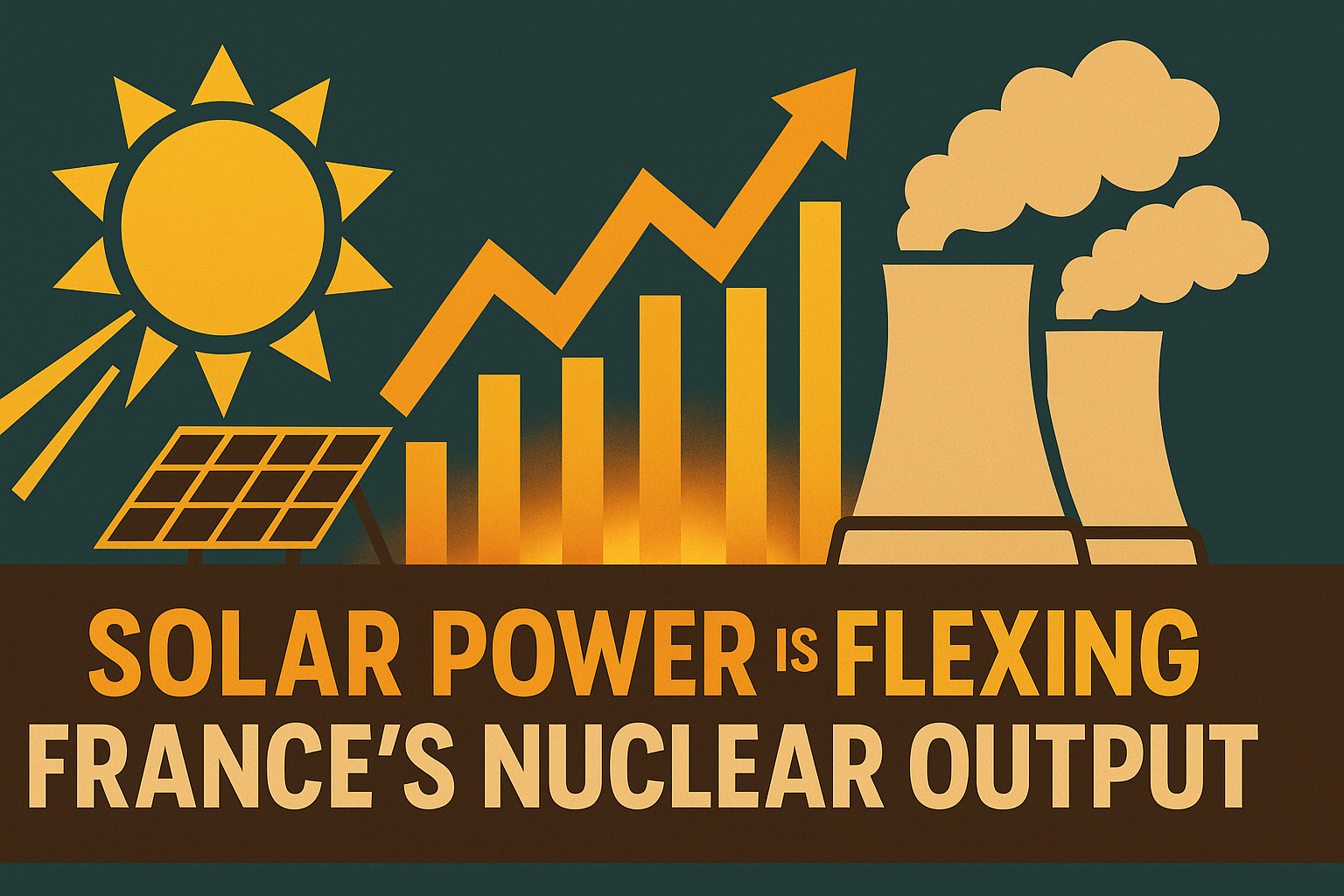Europe’s electricity system is undergoing rapid transformation as the continent accelerates its shift away from fossil fuels. Renewables are playing an increasingly central role: in 2023, wind and solar supplied nearly one-third of the EU’s electricity, up from around one-fifth in 2020. But this shift is also reshaping how traditional power sources, particularly France’s nuclear fleet, operate.
Nuclear Power in Transition
France’s 57 nuclear reactors, with a combined capacity of more than 60 gigawatts, remain the backbone of its electricity system, generating roughly 70% of domestic supply and supporting exports to neighboring countries. Their critical role was underscored during 2021–22, when outages at several plants contributed to soaring power prices across Europe, intensifying the energy crisis triggered by Russia’s full-scale invasion of Ukraine.
Today, however, nuclear stations are adapting to the surge in renewable energy. Market data shows that reactors are increasingly modulating output — cutting back during the middle of the day when solar generation drives down prices and ramping up in the evening as solar fades and demand rises.
Flexible but Controversial
Annika Amin, lead analyst for EU power markets at S&P Global, notes that “massive intraday swings” are now routine. On August 3, for instance, French nuclear output climbed from 24GW at 1pm to 42GW by 9pm. “It’s acting as a key source of flexibility,” Amin explained, while also allowing EDF, the state-owned utility, to capture higher revenues by generating more when prices peak.
This represents a significant change in behavior. Traditionally, nuclear output reductions occurred overnight when demand was lowest. Now, adjustments increasingly align with renewable energy production, particularly solar in the daytime and wind when conditions allow.
EDF reports that nuclear modulation rose by 16% in the first half of 2025 compared with the same period in 2024. According to Etienne Dutheil, director of nuclear production at EDF, this shift reflects the need to adapt to “greater variability” on Europe’s grids. EDF says its fleet can ramp output up or down by as much as 80% within 30 minutes, up to twice a day.
Challenges and Risks
While nuclear flexibility benefits the market, questions remain over its long-term sustainability. Analysts at Kpler warn that rapid adjustments may increase thermal stress and corrosion, potentially accelerating wear and tear on plants. France’s nuclear safety regulator has also suggested that frequent modulation could have contributed to the corrosion issues behind the unplanned outages in 2021.
EDF maintains that modulation does not compromise plant safety or performance, stressing that the practice is carefully managed. Yet concerns persist about balancing the flexibility demands of an evolving energy market with the structural integrity of aging reactors.
Looking Ahead
As solar and wind capacity continue to grow, the role of nuclear energy in Europe is shifting from a steady baseload provider to a more dynamic, market-responsive resource. This adaptation is reshaping electricity prices, influencing supply stability, and raising new technical challenges.
For now, France’s nuclear fleet remains indispensable to Europe’s energy mix — but its ability to flex in sync with renewables will be critical as the continent pushes toward a carbon-free future.








